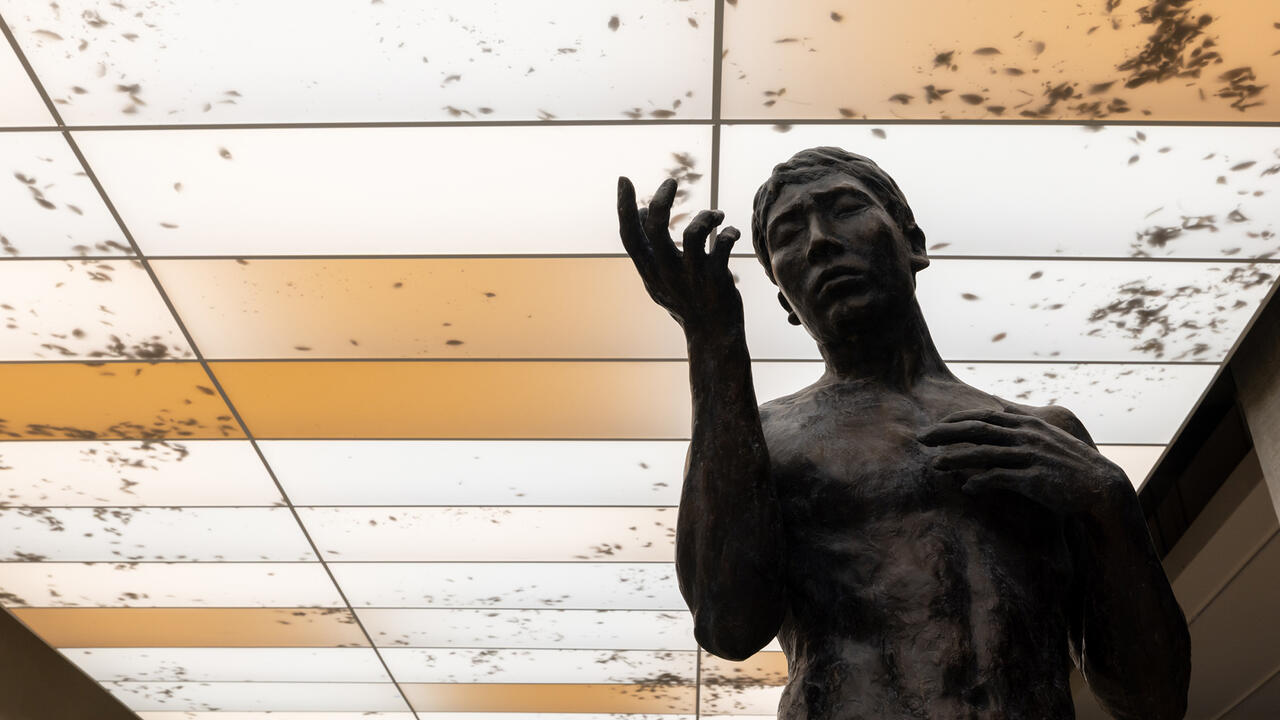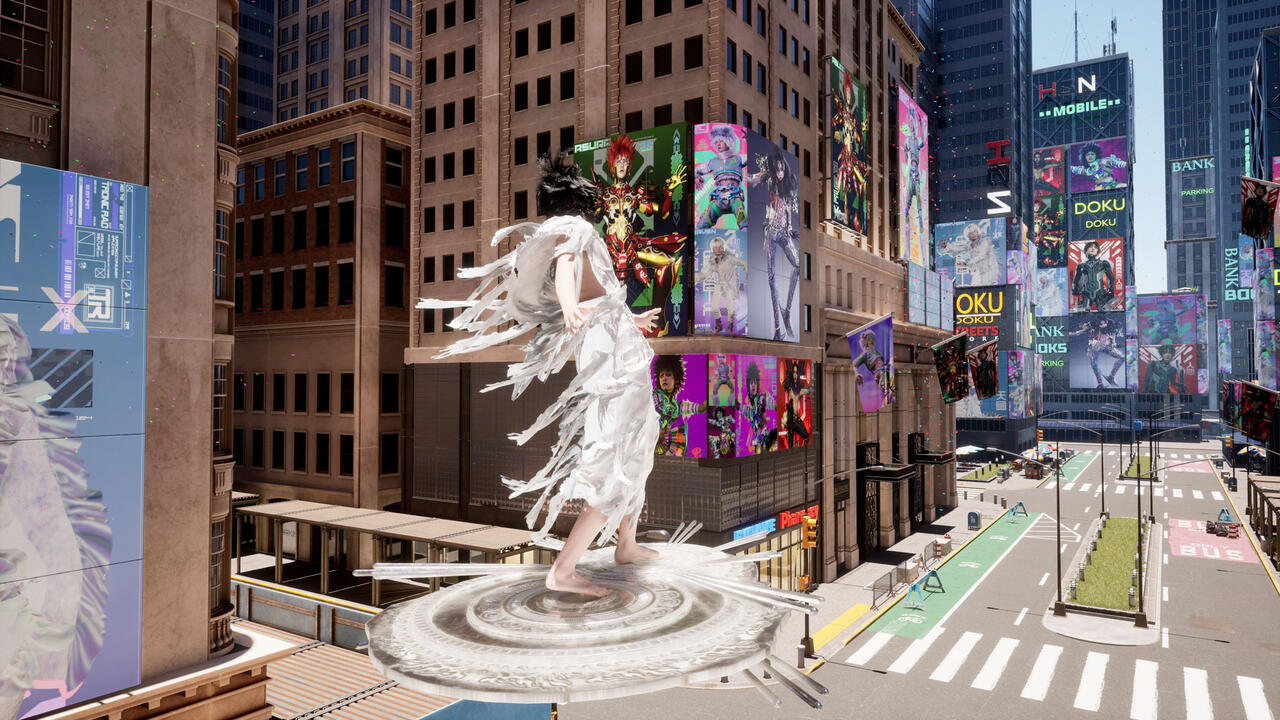Paulina Olowska
The heroines of Paulina Olowska's paintings might once have been called 'highly original', like the brilliant débutantes in a Henry James novel. But as portrayals of ideals from a bygone era they lack the specificity of, say, Alex Katz' figures. Two faceless women with cigarettes strike studied, asymmetrical poses in an interior delineated by an organization of rectangles. Olowska's restricted palette enhances the coolness of the composition's geometric structure - even the women's clothing is reduced to a series of achromatic polygons. This blankness is far from ahistorical though; the distinctive stylization comes from a period of early Modernism when the avant-garde was still an operable notion.
For a booklet that accompanied an exhibition in Warsaw last year Olowska wrote a short story about an architect visited by a ghost: ' "You have been blessed"', she is told, "with a drive towards particularly honest self-expression. Your peers cannot grasp the sheer innateness of your constructions! This inability to allow what you do to be tainted by mediocrity, or waver from the path of self-fulfilment - it's a very rare gift you have. I think you know the name for this gift, don't you?" "Yes", she whispered. The ghost raised its eyebrows, "Hmm?" "Genius?" she whispered, almost inaudibly.'
The story continues with a lot of aesthetic and intellectual posing which, if it wasn't a parody, would be utterly pretentious. Thankfully, the exaggerated bourgeois staginess convinces you of Olowska's satirical intentions. When the architect's friend suspects that she is pursuing creative martyrdom, she cries ' "That does it. I'm bringing you round some sushi right now, I've just been reading about it in Brian Eno's 80s diaries ...".'
In her paintings and performances Olowska dons pretentiousness as an accessory, as her fictional figures might parade their Dobermans or their sexuality. However, in some paintings the figures' triumphant attitudes imitate the even more constructed atmosphere of Social Realism. The title of the exhibition, 'In the Lubelian Salon', refers to the history of the intellectual élite in Poland. Lubelia was a Polish provincial resort that, in the 19th century, was a hotbed of intellectuals. During the many episodes of invasion, occupation and partitioning of Poland its culture was sublimated and occasionally outlawed. As a result, Lubelia has come to represent mediocrity, as the intelligentsia was replaced by flaccid pleasure-seekers. Olowska's revival of a fictional Lubelian Salon is an acknowledgement of a beleaguered cultural history.
Text painted on to the wall reads: 'Four o'clock late afternoon society. Who does not recognize the allure of Lubelia. Lubelia in the language that it refers to means now.' The language that Olowska refers to in her work is Esperanto, a Polish invention dating to 1887. Although the egalitarian pragmatism of a cross-cultural, easy-to-learn language runs counter to Modernist expectations of the avant-garde, Olowska intermingles the two very different utopian ideals. In her performances she translates the body into letters of the alphabet through costume and posture. 'In the Lubelian Salon' includes paintings of such
performances, but whether they are documentary or fictional is characteristically unclear. X (2002) portrays the artist in a long coat, crossing her arms over her face, palms open. Geometric Performance (2001) is a painting of people dressed as three-dimensional triangles or rectangles, their hands, feet and faces peeping out of the absurd costumes. Olowska's monosyllabic semaphores represent an internationalist language of meaninglessness dressed up as meaningful insignia. Supposedly the discrepancy between the gravity of the painting or performance and the meaning of the semaphoric message is intentionally frustrating.
A vitrine of paintings, collages and objects contains fabricated, adulterated and found imagery. Two found architectural models, obviously by different students working to the same brief, offer a structural counterpoint to Olowska's own, looser figuration. Her smaller paintings combine a deft painterliness with vaporous compositions; faces dissolve or merge as paint obscures rather than reveals. Although not definitively narrative, Olowska's imagery and references are so specific - Modernist architecture, performance poetry and 'Bauhaus yoga', for instance - that their collective aroma is unmistakable. Reintroducing the aesthetics of a period when originality was paramount into an era when the avant-garde is no longer considered possible, Olowska articulates a fundamental cynicism. Although linear progression and cultural hierarchy are no longer given credence, she self-styles a vanguardist attitude through the reconfiguration of cultural and historical nuggets.















